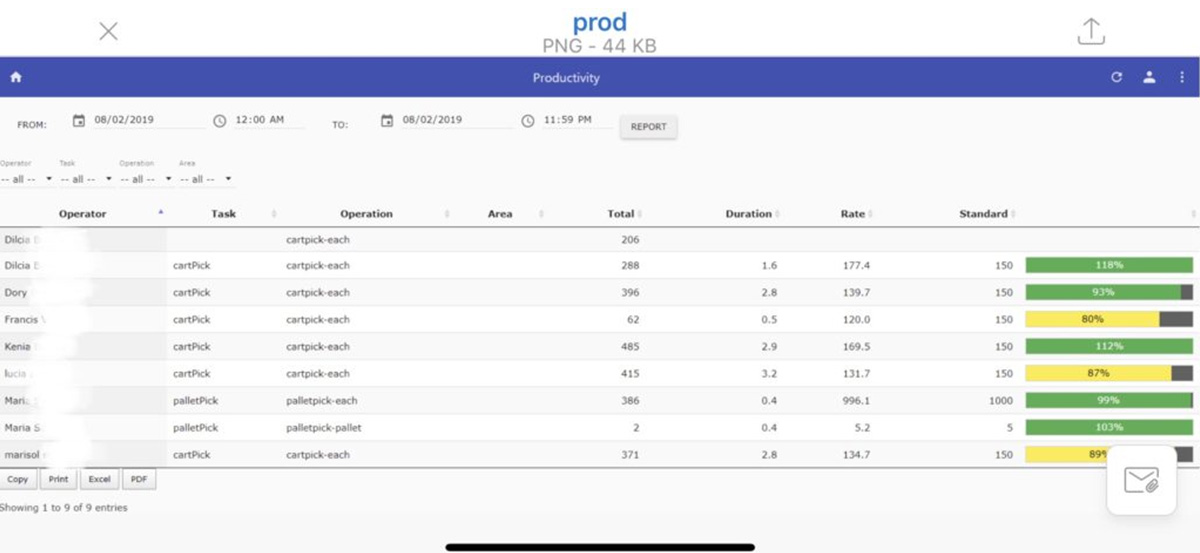
Automation is a key strategy proven to lower labor requirements and increase operational productivity, but it’s never going to eliminate the need to have a dedicated, motivated and hard-working team of employees. Many DC’s are discovering that investing in their workforce magnifies the performance of their warehouse, regardless of whether it is an automated or manual operation. It is critical to have reliable, dedicated employees that are trained and understand the business operation.
There’s a huge benefit and competitive advantage if your firm focuses on building a strategy to retain and reward your workforce. Whether your DC is highly automated or a simple cross dock full pallet in and out operation, trained employees matter for optimum productivity. A Workforce management strategy starts with:
It sounds like a simple approach to produce positive results. We need to take a step back in time a decade, however, to understand where we are today. In 2008 at the height of the great recession, good workers were fighting for and grateful to have minimum wage jobs. 2019 is a different world, with the current labor environment in a “shortage” state, becoming a more pressing challenge across all industries. This is clearly evident in complex B2B and e-commerce order fulfillment.
Due to its sheer size, Amazon is driving the increase in wages for the entire warehouse worker industry. They understand the labor shortage and are offering $15.00 an hour, paid vacation, and healthcare as compensation to entice warehouse workers. When Amazon builds a distribution center it draws workers away from other warehousing operations. It’s common for workers, especially temporary workers, to job jump through four or five locations in a year chasing an extra 25-50 cents an hour!
This can happen anywhere a major distributor opens a new operation located near existing distribution centers. Distribution laborers are drawn from their facility with advertising promising slightly better compensation. Recently, just outside Chicago, along the I-55 distribution center corridor, a full sized billboard advertised the firm’s name and NOW HIRING – $15.00 starting wage and health benefits for the DC operation! This is the new norm in competitive wages. The upward wage spiral is going to continue with the emergence of the last-mile warehouse-delivery driver demand to get goods to customers in a short window with same day response times.
Distribution for every business is much more complex and competitive than what it was just five years ago. With the hiring and demand for workers in your operation, if you rely on temporary workers, expect turn-over, increasing costs and wasted training efforts! That’s proven day-in and day-out. The average temporary worker is only 50% as effective as a permanent well-trained worker, especially during the initial 40-120 hours. Error rates and additional quality control checks drain DC productivity and cost a firm more than the cost of a higher paid well-trained employee.
Have you considered the total cost of constant worker turnover on the operation? HR departments continuously spend money on job fairs. Relying on the revolving door temp agency is also not effective – they fill a position with your minimum qualifications and the workers require constant training and oversight. A transient, high turn-over work force causes major fluctuation in a DC’s productivity, order fulfillment accuracy, and creates internal stress and distractions for the DC management team.
In an automated operation, if 30% of the daily workers are temporary, it’s nearly impossible to build a reliable productive workforce. Highly automated distribution centers run most efficiently with full time well trained employees. It is imperative that you invest in training programs and incentivized packages for employees. Temporary workers and transient labor forces are costly. It can take an employee three weeks to become highly efficient in a voice directed picking operation and similar training time to cross train workers to flex between work tasks, such as packing and inspection duties. Hiring and training a new employee can cost between $2,000 to $3,500 dollars. Can you afford to waste this amount of money after investing in automated pick, pack, and ship order fulfillment operation?
Turnover is costly in terms of profit margin. It affects efficiency and order throughput. High turnover rates drive up hiring costs, waste training time and lower the team moral. When does work force turnover become a red flag for an operation? Turnover rates between 15% to 20% yearly is an indicator that you may need to review and improve your labor management program. When the numbers are 20- 30%, it’s an indicator that the operation management team needs to re-assess the plan and consider changes that focus on how to attract and increase long term employees by implementing retention plans that reward longevity and incentives productivity.
The workforce strategy requires an assessment of how the labor pool is sourced. Does your company rely too heavily on a temporary agency? Does your human resources department have the resources to focus on hiring the right candidates that are matched to the position or simply filling a position with the minimum qualifications? Are the current full time employees well suited to their responsibilities? Is the company clearly demonstrating to people that they are valued assets through continuous training? Are there programs such as team or individual bonuses to award outstanding workers?
Three Steps to Incentivize Workers and Increase Retention Rates

Knowing who in the warehouse is a great fit and who is not such a great fit is essential data for overall warehouse performance. If you can’t measure, you can’t improve. Putting labor and productivity tracking measurements in place is the best way to determine which workers are meeting performance goals, and who can use more training.
Numina Group’s RDS™ voice directed order fulfillment automation software suite includes a real-time labor tracking and reporting module across all operations. This module also includes an order movement tracking module. It measures order throughput and tracks and reports individual worker picking productivity within their assigned work zones to the zones’ settable standards. The labor tracking and reporting data can be used to implement a pay for performance program that rewards employees for exceeding labor and accuracy goals. Pay for performance programs have proven to significantly improve warehouse performance across all elements of labor, including accuracy, base wages, overtime, and retention.
Are your programs structured to help employees enhance their value to the distribution center? Do you have a lead in each critical work area that acts as a trainer to coach individuals on how to improve productivity and teaches new employees how to efficiently use the technologies? People have personal pride when they see improvements in their skills and when they gain expertise. Create a path to continually improve worker’s knowledge of your warehouse processes and the critical component it serves your business. Investing in the employee’s personal development and their understanding of what’s important to corporate goals conveys a sense of belonging and be part of the company’s success.
Current workers can be both a strength and a weakness. Some might fail to keep up adequately with the changes needed to adapt to new technology and process changes. They can resist operational changes. People stuck in the past can hold back the performance of new employees.
Identify current employees who suggest process improvements and work to get more product out the door every day. These are your future leaders! Meetings and worker surveys can identify the current workers that embrace operational improvements.
Perhaps the greatest challenges to maintaining a productive distribution workforce is creating and ensuring people have careers, not just jobs. People will leave for 50 cents more an hour if they don’t have a sense of belonging. By establishing clear career paths, people can see how they can develop personally. Just as employers want employees to be engaged and committed to the mission, employees expect the same back. They need to understand the company’s commitment to them individually and to their value to the operation. They also need to know that you have provided them with a safe environment and that you care about their well-being! Keep people engaged, care about safety, pay competitive wages, reward workers when they go the extra mile, and they’ll be long-term employees.

What people want instead of a job is a career and a path that can support them and their families for a long time to come. They want to be part of a winning team that works together to achieve great goals. In summary, these are the key points to consider when building an effective labor force in warehouse and distribution center operations.
Warehouse and distribution center employees will quickly get behind a strategy when they understand you’ve built a win-win strategy. They’ll stop chasing the 50 cents more an hour down the street!
Contact us for more information on how to incorporate labor and productivity tracking to increase performance in your DC operation.

The Numina Group
10331 Werch Drive
Woodridge, IL 60517
630-343-2600
How the Right Warehouse Automation Decisions Can Solve Your Labor Woes As the economy roars